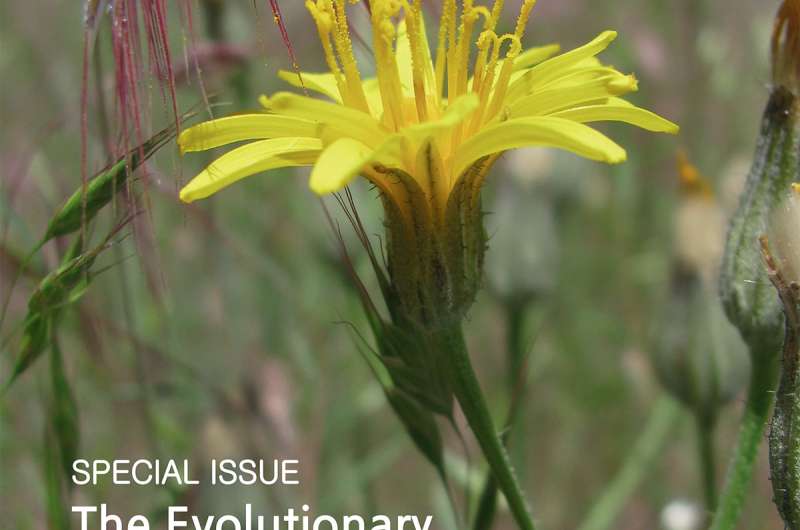Double your genes: Stepping stones for the next century of understanding plant polyploidy

We might think of living organisms as typically having two sets of chromosomes—-one from mom and one from dad. But there are lots of variations out there. Polyploidy, or having more than two chromosome copies, is especially common in plants, including some of the tasty ones we eat, such as potatoes, wheat, and strawberries. In fact, polyploidy is a major driver of plant diversity both on our plates and in the wild.
The resurgence in polyploidy research has followed the surprising result that many plant genomes are actually ancient polyploidy events. The American Journal of Botany Special Issue on "The Evolutionary Importance of Polyploidy" explores the latest developments and research in the field.
Edited by Dr. Michael Barker (University of Arizona), along with Drs. Brian Husband (University of Guelph) and J. Chris Pires (University of Missouri), the collection gathers contributions that began as a symposium at the Botany 2015 meetings in Alberta, Canada. "We organized that symposium, and the issue, to highlight the recent renaissance of interest in polyploidy," says Dr. Barker.
The special issue focuses on three main themes: polyploidy origins; evolutionary consequences; and impacts on plant ecology. The collection offers up-to-date reviews and modelling papers, together with comparative and in-depth studies from diverse polyploids. These articles shed light on questions of polyploidy old and new using both classical approaches and new techniques.
Setting the foundations for both the special issue and future polyploidy work is a review by Soltis et al. (2016), who highlight what is known and the challenges of developing a unified theory of polyploidy.
One immediate difficultly arising for a polyploid individual is finding suitable mates because of mismatches in genome number. Using modeling, Fowler and Levin (2016) show the importance of population size in polyploidy establishment, and phylogenetic analyses confirm polyploidy does often equal speciation (Zhan et al., 2016). However, speciation via polyploidy isn't entirely as simple as it sounds. Nuances of the mechanisms for reproductive isolation and speciation are explored further in the issue in two different species ((Husband et al., 2016; Vallejo-Marín et al., 2016). Unusual to most origin stories is that polyploids can do it more than once. Three groups trace the multiple independent origins of polyploidy showing how common it can be (McAllister and Miller, 2016; Rešetnik et al., 2016; Sears and Whitton, 2016).
The consequences of genome duplication have important implications for how the genomes can evolve. Four papers explore the evolutionary consequences of polyploidy through literature review (Salse, 2016), a phylogenetic approach (Zenil-Ferguson et al., 2016), a laboratory study painting chromosomes (Mandáková et al., 2016), and a population genomic approach (Ågren et al., 2016) showing the diversity of methodologies taken to answering these questions. Other articles examine ancient polyploidy events to understand their consequences (Barker et al., 2016; Bergh et al., 2016), whereas a comparative approach suggests that there is a relationship between polyploidy and sexual system in plants (Glick et al., 2016).
Although the evolutionary consequences of polyploidy are better studied, this collection highlights that genome duplications can have an impact on plant ecology. Segraves and Anneberg (2016) review the scant studies showing effects of polyploidy on plant interactions with pollinators, herbivores, and pathogens and suggest this is a rich avenue to explore. Stable environments may offer selection against polyploidization as suggested by an analysis of plants from the diverse flora of the South African Cape region (Oberlander et al., 2016), and two further studies show polyploids are associated with novel ecological niches (Arrigo et al., 2016; Laport et al., 2016).
"A challenge for the community over the coming years will be to better integrate these disparate threads of research," said Barker. The way forward is to take an integrative approach. "Adding genetics and genomics to classically ecological study systems, or ecological and phenotypic analyses to well-studied genetic model systems will be a recipe for future success in polyploidy."
More information: M. S. Barker et al, Spreading Winge and flying high: The evolutionary importance of polyploidy after a century of study, American Journal of Botany (2016). DOI: 10.3732/ajb.1600272
Journal information: American Journal of Botany
Provided by Botanical Society of America


















